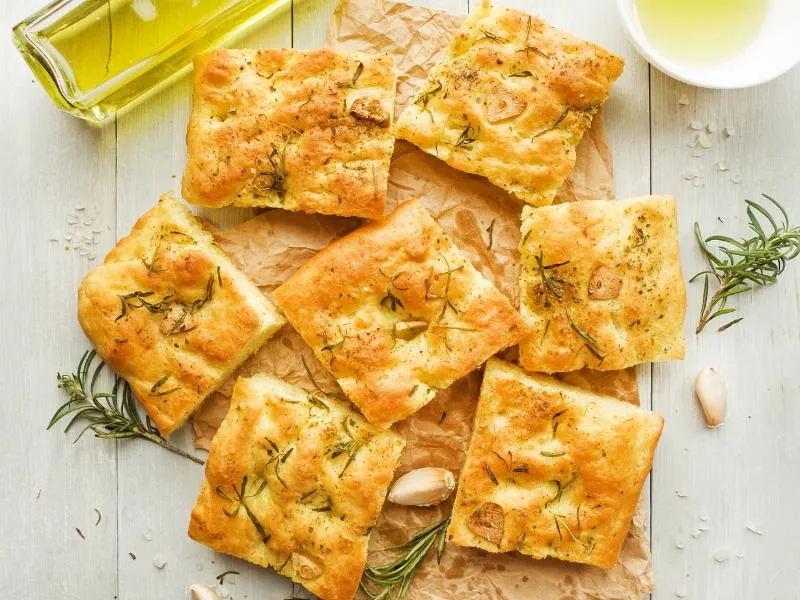Focaccia
A dimpled flatbread enriched with olive oil, sea salt, and herbs baked to golden perfection.
👉 View Authentic Recipe 👈
About This Dish
Focaccia is an iconic Italian flatbread that originated in Liguria, particularly in the coastal city of Genoa, where the classic version is known as “Focaccia Genovese.” This ancient bread dates back to the Etruscans and Romans, who created early versions by baking flattened dough on heated stones. The name itself derives from the Latin word “focus,” meaning hearth or fireplace.
Traditional Ligurian focaccia features a dimpled surface created by pressing fingertips into the dough before baking. These indentations serve both practical and culinary purposes, holding pools of high-quality olive oil and ensuring even baking. Authentic Genovese focaccia is characterized by its moderate thickness (about 2cm), golden crust, tender interior, and distinctive olive oil flavor enhanced with sea salt.
While the classic version is topped simply with olive oil and salt, regional variations abound throughout Italy. Focaccia Barese from Puglia incorporates potatoes into the dough, while Tuscan schiacciata is thinner with varying toppings. Modern interpretations may feature rosemary, cherry tomatoes, olives, or onions, though purists in Liguria maintain that the original’s simplicity best showcases the quality of the olive oil and bread itself.
🧑🍳 Analyzed by CucinaBot
Why This Dish Works
Focaccia achieves its perfect texture through a careful balance of hydration and fat. The high-moisture dough (typically 70-80% hydration) creates an open, airy crumb structure, while generous olive oil delivers richness and prevents drying during baking. The dimpling process redistributes air pockets in the proofed dough, creating the signature irregular texture. Additionally, the salt crystals on top provide flavor bursts that enhance the wheat’s natural sweetness through contrast.
Key Success Factors
- High Hydration: The wet dough (around 70-80% hydration) is essential for proper texture and must be properly handled despite stickiness
- Proper Proofing: Two distinct rises—bulk fermentation followed by a second rise in the baking pan—develop flavor and structure
- Liberal Olive Oil: Oil should be incorporated in the dough, brushed before dimpling, and drizzled before baking for authentic flavor and texture
- Proper Dimpling: Press firmly with fingertips all the way to the pan’s bottom without tearing the dough to create the defining texture
Common Pitfalls
Many non-authentic recipes compromise on hydration levels for easier handling, resulting in dense bread rather than the light, airy texture of true focaccia. Another common mistake is rushing the proofing process, which prevents proper gluten development and flavor complexity. Mass-produced versions often skimp on olive oil quantity and quality, missing the essential richness that defines genuine Ligurian focaccia.
How to Judge Authenticity
When reviewing recipes, look for these markers of authenticity:
- High hydration dough ratio (approximately 70-80% water to flour by weight)
- Multiple rises, including a final proof in the baking vessel
- Liberal use of high-quality extra virgin olive oil, added at multiple stages
- Traditional dimpling technique performed just before baking
- Simple ingredients—flour, water, yeast, salt, and olive oil (minimal or no additions for classic versions)